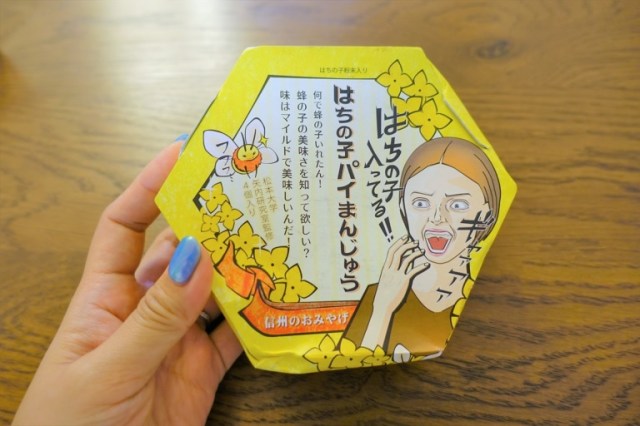
Because we finished our wasp larvae bento, we think we’ve earned a wasp larvae dessert.
Highway rest stops in Japan aren’t just places to stretch your legs and gas up your car. They’re also excellent spots for souvenir sweets shopping, as they’re generally stocked with all sorts of locally produced snacks using regional ingredients.
So on a recent drive through Nagano Prefecture, our Japanese-language reporter Haruka Takagi made sure to pull into the rest area and browse its store shelves, and that’s where she came across these.
The green box contains okaki, a kind of Japanese rice cracker, and the yellow one manju, sweet dumplings. So why are the illustrated characters on those packages screaming? Because they’re made with bugs, specifically locusts for the crackers, and wasp larvae for the dumplings.
▼ Ah, it all makes sense now.
Though Japan has a famously broad palate, bugs aren’t eaten in most parts of the country. There are a few exceptions, however, and Nagano does have a cultural culinary tradition of eating locusts and larvae. However, the practice is getting less and less common with each generation, and so even the makers of the locust okaki and wasp larvae manju realize that more modern Japanese people will react with a scream of terror than a cry of joy when presented with the opportunity/challenge of eating insects.
However, even though Haruka didn’t grow up in Nagano, she’s tried wasp larvae before. A few months back, she dined on hebomeshi, a bento box filled with rice and wasp larvae that she picked up in, you guessed it, the Nagano area. To her surprise, it had tasted delicious, with the soy sauce-based seasoning combining with the larvae for a sweet and salty flavor and as she’d bitten into the bodies of the baby wasps a milky liquid that reminded her of the flavor of salmon roe leaked out of them.
So, basically, Haruka’s experience with eating wasp larvae was that they taste great, but they’re pretty gross to look at. So as she got set to open her 519-yen (US$3.85) box of wasp larvae manju, her taste buds were looking forward to it, but her eyes weren’t.
It turned out, though, that she actually didn’t have anything to worry about.
As some of you may remember (because no matter how hard you try, you can’t forget), when one of our other brave reporters ate some Japanese wasp crackers, each piece looked like it was crawling with bugs. In the case of these wasp larvae manju, though, there’s nothing at all insect-like about their appearance, neither on the outside or the inside.
That’s because, according to the list of ingredients printed on the back of the box, they’re made with powdered wasp larvae. But do their reassuring looks belie a shocking taste?
Nope! Haruka tried tasting the dumpling in all sorts of different ways. She tried the outer cake layer by itself, scooped out a bit of the white anko sweet bean paste filling for a check, and took a normal bite, getting cake and filling on her tastebuds simultaneously. Each time it tasted great, and also surprisingly normal. She couldn’t detect any unusual bug-like aspects, and if she hadn’t seen the package or read the ingredients, she’d have thought this was just an ordinary delicious dumpling.
Moving on to the okaki rice crackers, it turns out that their locust content too is powdered.
Going in for a close look, Haruka was pretty sure that the flecks of dark color are the powdered locust bits, since the only other granulated seasoning on the ingredient list is sugar. Still, if you just saw these crackers without knowing ahead of time what they are, it’s doubtful your mind would jump to “Aha! Locusts!” upon seeing the powder.
Haruka popped one into her mouth, and was happy to find that the locust okaki taste great too! They’re sweet, but the rice cracker base gives them a bit of mature bitterness as well, with no strangeness in the flavor profile that would have you suspecting there’s anything unusual in them.
In the end, this puts these unusual snack foods in kind of a strange place. They taste great, but because they also taste like normal snacks, they might not provide enough of an insectoid impression to fully satisfy hardcore fans of edible bugs (Haruka assumes such people exist). On the other hand, despite the wasp larvae manju and locust okaki having flavors that most people would like, those who are grossed out by the concept could argue that they can just eat regular no-bugs-in-them snacks and not be missing anything.
So ultimately Haruka recommends these snacks to anyone who’s intrigued by the idea of eating bugs, but wants to start off with something that’s going to taste good and not freak them out visually. And if you do want to get freaked out visually, Haruka is happy to teach you how to prepare Japan’s horrifyingly monstrous-looking sea squirt too.
Photos © SoraNews24
● Want to hear about SoraNews24’s latest articles as soon as they’re published? Follow us on Facebook and Twitter!
[ Read in Japanese ]


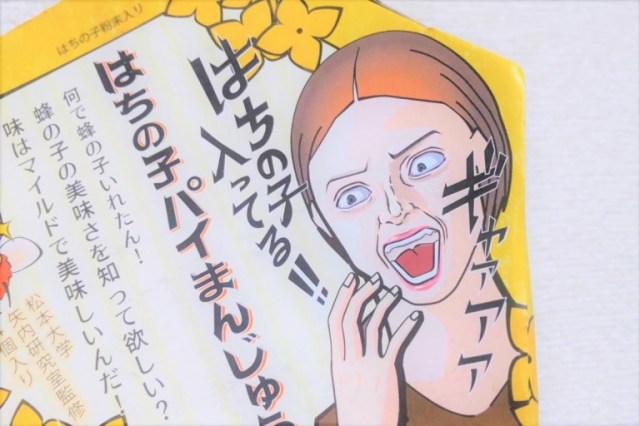
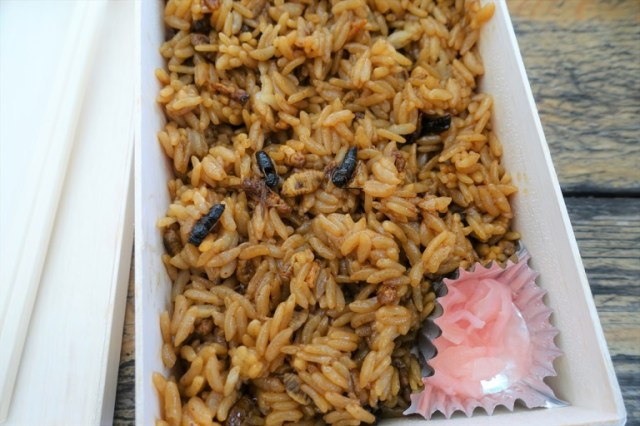
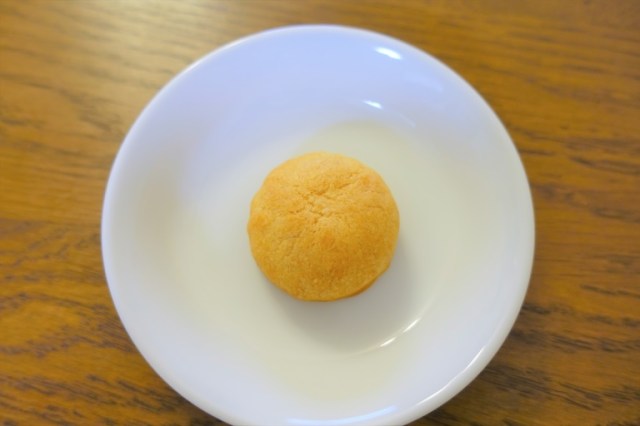
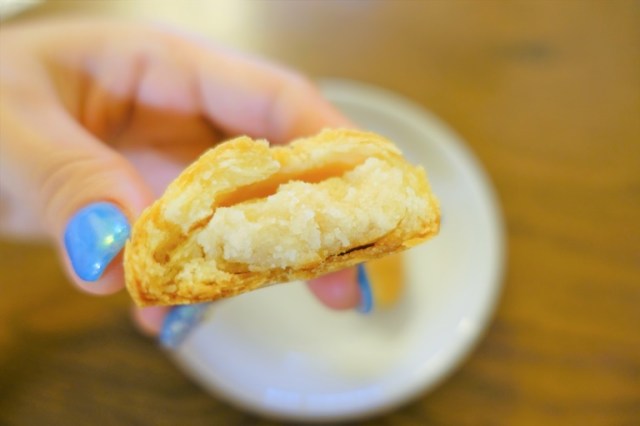
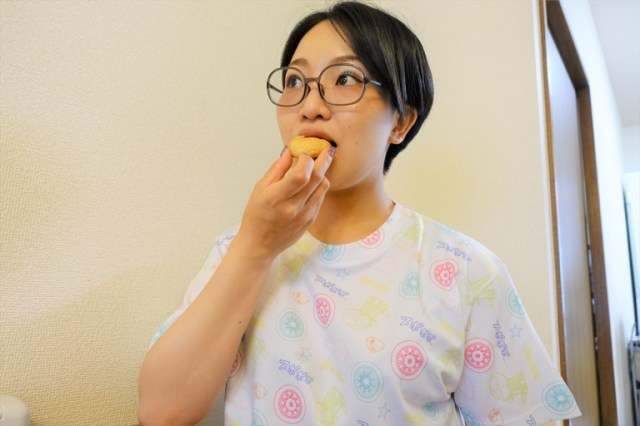
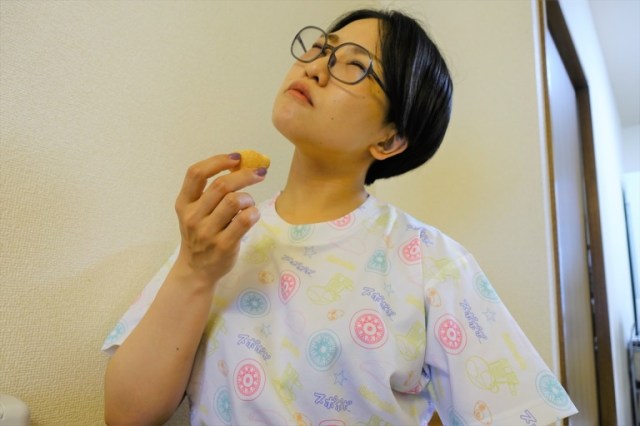
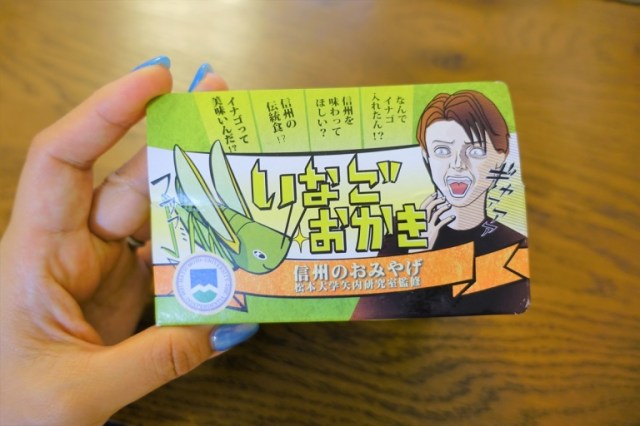
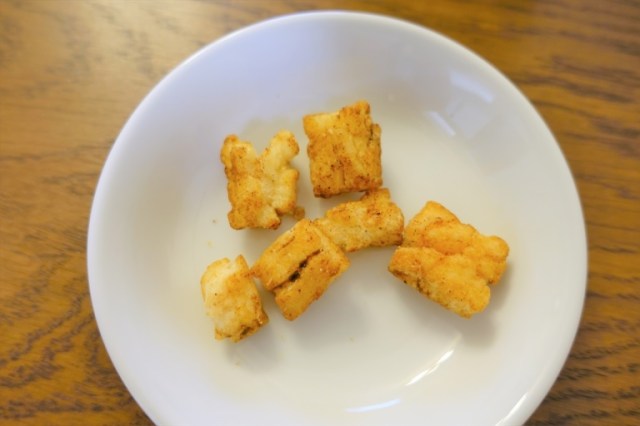
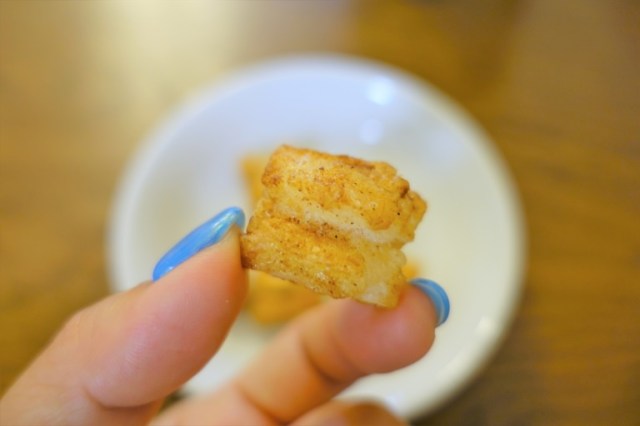

 Wasp larvae bento: a traditional delicacy in the Japanese mountains
Wasp larvae bento: a traditional delicacy in the Japanese mountains Japanese wasp-filled crackers: Their sting is far worse than a bite
Japanese wasp-filled crackers: Their sting is far worse than a bite A visit to Japan’s wasp nest art museum stings us with respect for the industrious insects【Pics】
A visit to Japan’s wasp nest art museum stings us with respect for the industrious insects【Pics】 Japan’s hardest rice crackers, snacks of the shinobi, go soft, so do they have a reason to exist?
Japan’s hardest rice crackers, snacks of the shinobi, go soft, so do they have a reason to exist? Do you know what this caterpillar-like food is? We had no idea!【Taste test】
Do you know what this caterpillar-like food is? We had no idea!【Taste test】 Disillusionment at Tsukiji’s tourist-target prices led us to a great ramen restaurant in Tokyo
Disillusionment at Tsukiji’s tourist-target prices led us to a great ramen restaurant in Tokyo Starbucks Japan releases new zodiac chilled cup drink for 2026
Starbucks Japan releases new zodiac chilled cup drink for 2026 More Than a Capsule Stay: Why Solo Travelers Choose “global cabin Yokohama Chinatown”
More Than a Capsule Stay: Why Solo Travelers Choose “global cabin Yokohama Chinatown” Japan’s 30 Best Selling Video Games of All Time
Japan’s 30 Best Selling Video Games of All Time Look cool at the pool with these new waterproof over-knee socks
Look cool at the pool with these new waterproof over-knee socks Is this the most relaxing Starbucks in Japan?
Is this the most relaxing Starbucks in Japan? Wazigen Shizukaya’s latest collection of modern men’s kimono make a move for high fashion
Wazigen Shizukaya’s latest collection of modern men’s kimono make a move for high fashion 12 Japanese MLB players to be honored with manhole lids across the country
12 Japanese MLB players to be honored with manhole lids across the country Lacquerware supplier to emperor of Japan and Pokémon team up for new tableware
Lacquerware supplier to emperor of Japan and Pokémon team up for new tableware Japanese hotel offering 183-night stay plan for an incredibly low price
Japanese hotel offering 183-night stay plan for an incredibly low price 7-Eleven Japan starts new temporary luggage storage service in over 300 branches
7-Eleven Japan starts new temporary luggage storage service in over 300 branches Starbucks teams up with 166-year-old Kyoto doll maker for Year of the Horse decorations【Photos】
Starbucks teams up with 166-year-old Kyoto doll maker for Year of the Horse decorations【Photos】 Tokyo’s Tsukiji sushi neighborhood asks tour groups to stay away for the rest of the month
Tokyo’s Tsukiji sushi neighborhood asks tour groups to stay away for the rest of the month Street Fighter Hadouken Churros to be launched and eaten in Tokyo, Okami pudding on offer too
Street Fighter Hadouken Churros to be launched and eaten in Tokyo, Okami pudding on offer too Japanese woman mistaken for bear
Japanese woman mistaken for bear Return of Totoro sequel short anime announced for Ghibli Park
Return of Totoro sequel short anime announced for Ghibli Park Starbucks on a Shinkansen bullet train platform: 6 tips for using the automated store in Japan
Starbucks on a Shinkansen bullet train platform: 6 tips for using the automated store in Japan Japan’s human washing machines will go on sale to general public, demos to be held in Tokyo
Japan’s human washing machines will go on sale to general public, demos to be held in Tokyo Japanese train company is letting fans buy its actual ticket gates for their homes
Japanese train company is letting fans buy its actual ticket gates for their homes Is China’s don’t-go-to-Japan warning affecting tourist crowds in Tokyo’s Asakusa neighborhood?
Is China’s don’t-go-to-Japan warning affecting tourist crowds in Tokyo’s Asakusa neighborhood? Starbucks Japan unveils new Christmas goods and a rhinestone tumbler that costs 19,500 yen
Starbucks Japan unveils new Christmas goods and a rhinestone tumbler that costs 19,500 yen Tokyo considering law requiring more trash cans following litter increase in heavily touristed area
Tokyo considering law requiring more trash cans following litter increase in heavily touristed area Nintendo’s Kirby now delivering orders at Kura Sushi restaurants, but not in Japan
Nintendo’s Kirby now delivering orders at Kura Sushi restaurants, but not in Japan Tokyo event lets you travel back in time, for free, to celebrate 100 years since Showa era start
Tokyo event lets you travel back in time, for free, to celebrate 100 years since Showa era start Survey asks foreign tourists what bothered them in Japan, more than half gave same answer
Survey asks foreign tourists what bothered them in Japan, more than half gave same answer Japan’s deadliest food claims more victims, but why do people keep eating it for New Year’s?
Japan’s deadliest food claims more victims, but why do people keep eating it for New Year’s? We deeply regret going into this tunnel on our walk in the mountains of Japan
We deeply regret going into this tunnel on our walk in the mountains of Japan Studio Ghibli releases Kodama forest spirits from Princess Mononoke to light up your home
Studio Ghibli releases Kodama forest spirits from Princess Mononoke to light up your home Major Japanese hotel chain says reservations via overseas booking sites may not be valid
Major Japanese hotel chain says reservations via overseas booking sites may not be valid Put sesame oil in your coffee? Japanese maker says it’s the best way to start your day【Taste test】
Put sesame oil in your coffee? Japanese maker says it’s the best way to start your day【Taste test】 The top 10 annoying foreign tourist behaviors on trains, as chosen by Japanese people【Survey】
The top 10 annoying foreign tourist behaviors on trains, as chosen by Japanese people【Survey】 No more using real katana for tourism activities, Japan’s National Police Agency says
No more using real katana for tourism activities, Japan’s National Police Agency says Starbucks Japan reveals new sakura drinkware collection, inspired by evening cherry blossoms
Starbucks Japan reveals new sakura drinkware collection, inspired by evening cherry blossoms Locust crepes crunch on your teeth, melt in your mouth in east Japan【Taste test】
Locust crepes crunch on your teeth, melt in your mouth in east Japan【Taste test】 Ice mochi is Japan’s original freeze-dried food from over 600 years ago【Taste test】
Ice mochi is Japan’s original freeze-dried food from over 600 years ago【Taste test】 Wet rice crackers? Trying nure-senbei for the first time【Taste test】
Wet rice crackers? Trying nure-senbei for the first time【Taste test】 Mr. Sato presents the salad rice cracker showdown (no salads involved)【Taste test】
Mr. Sato presents the salad rice cracker showdown (no salads involved)【Taste test】 Matcha green tea cricket protein bars appear in Japan, and we’ve eaten them【Taste test】
Matcha green tea cricket protein bars appear in Japan, and we’ve eaten them【Taste test】 We smash up some rock-hard rice crackers with a hammer to find out which one is the toughest
We smash up some rock-hard rice crackers with a hammer to find out which one is the toughest Who the heck is this dancing foreigner advertising products in Japan?
Who the heck is this dancing foreigner advertising products in Japan? Taste-testing Japan’s “I love Obama” cakes【Taste test】
Taste-testing Japan’s “I love Obama” cakes【Taste test】 Japanese meat buns with deer meat?!? Taste-testing Nagano’s shikanikuman【Taste test】
Japanese meat buns with deer meat?!? Taste-testing Nagano’s shikanikuman【Taste test】 Sweet Japanese couple serve jumbo parfaits at hidden underground joint in Osaka
Sweet Japanese couple serve jumbo parfaits at hidden underground joint in Osaka Japan’s new “painful sadness” snacks are a deliciously mysterious linguistics lesson【Taste test】
Japan’s new “painful sadness” snacks are a deliciously mysterious linguistics lesson【Taste test】 Coffee-infused rice for rice balls and curry? Taste-testing a recipe from Japan’s coffee experts
Coffee-infused rice for rice balls and curry? Taste-testing a recipe from Japan’s coffee experts One of Japan’s best-kept ice cream secrets…is hiding at a home improvement center? 【Taste test】
One of Japan’s best-kept ice cream secrets…is hiding at a home improvement center? 【Taste test】 Soy sauce on pancakes? We try the newest dessert idea from a century-old soy maker【Taste test】
Soy sauce on pancakes? We try the newest dessert idea from a century-old soy maker【Taste test】 Who makes Japan’s best Spam-style onigiri convenience store rice ball? Let’s find out【Taste test】
Who makes Japan’s best Spam-style onigiri convenience store rice ball? Let’s find out【Taste test】
Leave a Reply